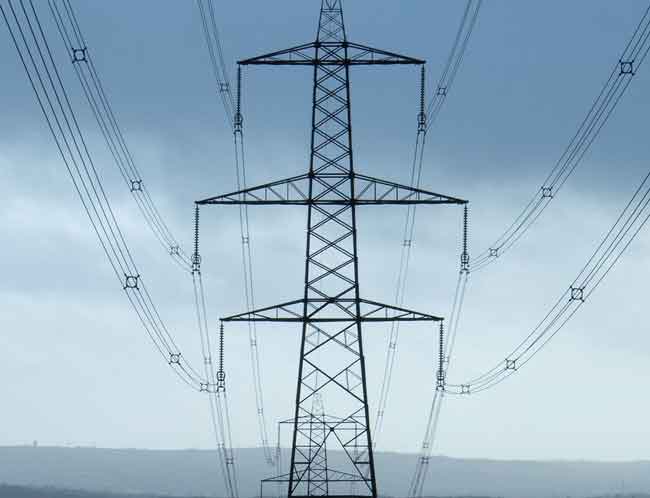Monitoring tools help cut home energy use
By New York Times
Arc Flash Training - CSA Z462 Electrical Safety
Our customized live online or in‑person group training can be delivered to your staff at your location.

- Live Online
- 6 hours Instructor-led
- Group Training Available
The results of the research project by the Pacific Northwest National Laboratory (PNNL) of the Energy Department suggest that if households have digital tools to set temperature and price preferences, the peak loads on utility grids could be trimmed by up to 15 percent a year.
Over a 20-year period, this could save $70 billion on spending for power plants and infrastructure, and avoid the need to build the equivalent of 30 large coal-fired plants, say scientists at the federal laboratory.
The demonstration project was as much a test of consumer behavior as it was of new technology. Scientists wanted to find out if the ability to monitor consumption constantly would cause people to save energy — just as studies have shown that people walk more if they wear pedometers to count their steps.
In the Olympic Peninsula, west of Seattle, 112 homes were equipped with digital thermostats, and computer controllers were attached to water heaters and clothes dryers. These controls were connected to the Internet.
The homeowners could go to a Web site to set their ideal home temperature and how many degrees they were willing to have that temperature move above or below the target. They also indicated their level of tolerance for fluctuating electricity prices. In effect, the homeowners were asked to decide the trade-off they wanted to make between cost savings and comfort.
The households, it turned out, soon became active participants in managing the load on the utility grid and their own bills.
“I was astounded at times at the response we got from customers,” said Robert Pratt, a staff scientist at PNNL and the program director for the demonstration project. “It shows that if you give people simple tools and an incentive, they will do this.”
“And each household,” Mr. Pratt added, “doesn’t have to do a lot, but if something like this can be scaled up, the savings in investments you don’t have to make will be huge, and consumers and the environment will benefit.”
After some testing with households, the scientists decided not to put a lot of numbers and constant pricing information in front of consumers. On the Web site, the consumers were presented with graphic icons to set and adjust.
“We gave them a knob,” Mr. Pratt said. “If you don’t like it, change the knob.”
Behind the fairly simple consumer settings was a sophisticated live marketplace, whose software and analytics were designed by I.B.M. Research. Every five minutes, the households and local utilities were buying and selling electricity, with prices constantly fluctuating by tiny amounts as supply and demand on the grid changed.
“Your thermostat and your water heater are day-trading for you,” said Ron Ambrosio, a senior researcher at the Watson Research Center of I.B.M.
The households in the demonstration project on average saved 10 percent on their monthly utility bills. Jerry Brous, a retiree who owns a three-bedroom house in Sequim, Wash., did a bit better, saving about 15 percent, which added up to $135 over a year.
Mr. Brous, 67, said that at first he was a real price hawk, allowing the household temperature to go 10 degrees above or below the target as the outside temperature changed. In the winter, he and his wife, Pat, decided the house was too cold at times, so they changed the range to five degrees.
The monetary savings were nice, but Mr. Brous said his main motivation for joining the project was to participate in research that might accelerate the spread of energy efficiency programs.
Shortly after the demonstration project ended last March, the digital thermostat and other equipment supplied by Invensys Controls were removed from Mr. Brous’s home. “I miss it a lot,” he said. “It was cool.”
The research project was done with an eye toward guiding policy on energy-saving programs. Efficiency programs promise to curb the nationÂ’s fuel bill and reduce damage to the environment, if consumers can be persuaded to use energy more intelligently. Still, a big question among economists and energy experts is how to tailor incentives to prompt changes in energy consumption.
The market signals from household utility bills are not clear to people, some experts say. Conservation steps, they note, may bring savings of only a few percentage points, and even those may be obscured by seasonal swings in electricity use and pricing. Thus, they say, the only way to make real progress in household energy efficiency is with sizable subsidies and mandated product standards.
The federal laboratoryÂ’s project was instead a test of market incentives and up-to-the-minute information. But how quickly the kind of technology used in the project might be deployed across the country is uncertain. Many utilities are experimenting with this so-called smart-grid technology, but most are using it to upgrade their own networks, not to let households manage consumption.
One big hurdle is that in most states, utilities are still granted rates of return that depend mainly on the power plants and equipment they own and operate instead of how much energy they save.
“What they did in Washington is a great proof of concept, but you’re not likely to see this kind of technology widely used anytime soon,” said Rick Nicholson, an energy technology analyst at IDC, a research firm.











